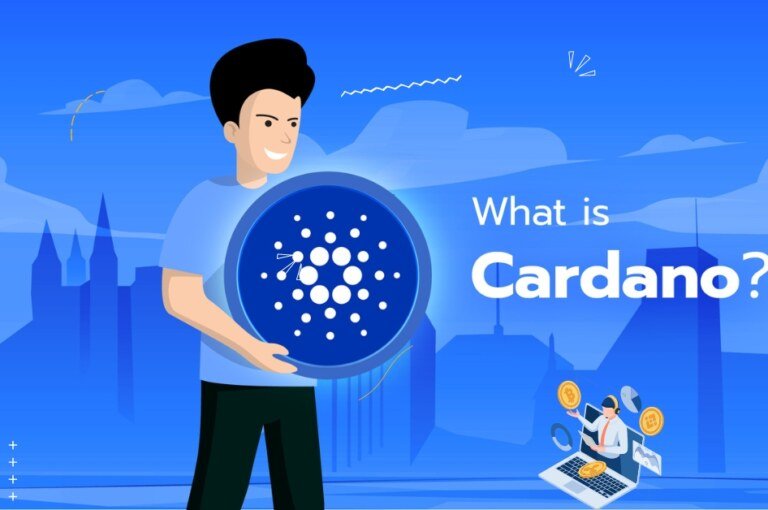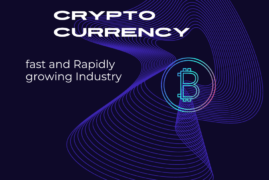Introduction to Cardano: Cardano is a decentralized blockchain platform that strives to address the scalability, interoperability, and sustainability challenges faced by earlier-generation blockchains. Launched in 2017, Cardano is often hailed as a third-generation blockchain due to its focus on rigorous academic research, formal methods, and peer-reviewed development.
Explanation of its blockchain technology: Cardano’s blockchain is built on a layered architecture comprising two main layers: the Cardano Settlement Layer (CSL) and the Cardano Computation Layer (CCL). This separation of concerns allows for greater flexibility and scalability, with the CSL handling transactions and ADA transfers, while the CCL is dedicated to smart contract execution and decentralized application (dApp) deployment.
Overview of its native cryptocurrency (ADA): ADA serves as the native cryptocurrency of the Cardano platform, facilitating transactions, staking, and governance activities. ADA has gained significant traction in the cryptocurrency market, ranking among the top digital assets by market capitalization.
Comparison with other cryptocurrencies: In contrast to Bitcoin’s proof-of-work (PoW) consensus mechanism and Ethereum’s hybrid PoW/PoS model, Cardano utilizes a pure proof-of-stake (PoS) consensus algorithm called Ouroboros. This PoS approach offers several advantages, including energy efficiency, scalability, and resistance to centralization.
2. History and Development
Founding of Cardano: Cardano was founded by Charles Hoskinson, who previously co-founded Ethereum. Since its inception, Cardano has prioritized scientific research and formal methods, collaborating with academic institutions worldwide to advance the state of blockchain technology.
Key milestones in its development: In recent years, Cardano has achieved several significant milestones, including the successful deployment of the Shelley upgrade in 2020, which introduced decentralized staking and delegation to the network. Subsequent upgrades, such as Allegra and Mary, have further enhanced Cardano’s functionality, paving the way for the deployment of smart contracts and multi-asset support.
Major contributors and team members: The development of Cardano is spearheaded by Input Output Hong Kong (IOHK), a blockchain engineering company led by Charles Hoskinson. Additionally, the Cardano Foundation and Emurgo play crucial roles in promoting adoption, fostering partnerships, and supporting the Cardano ecosystem.
Evolution of its governance model: Cardano’s governance model is characterized by its emphasis on decentralization and community participation. Through mechanisms such as on-chain voting and funding proposals, stakeholders can actively contribute to the platform’s development and decision-making processes.
Overview of Cardano’s architecture: Cardano’s architecture is designed to be modular, scalable, and interoperable, with a focus on sustainability and security. The separation of the CSL and CCL layers allows for seamless upgrades and improvements without disrupting the entire network.
Explanation of its consensus mechanism: Ouroboros, Cardano’s PoS consensus algorithm, is the cornerstone of its security and scalability. Ouroboros divides time into epochs and slots, with stakeholders participating in slot leader elections to produce blocks and validate transactions. This approach ensures network security while minimizing energy consumption and environmental impact.
Smart contract capabilities and scripting language: Cardano’s smart contract platform is built on Plutus, a domain-specific language (DSL) based on Haskell. Plutus enables developers to write secure and verifiable smart contracts, leveraging formal methods and functional programming principles to ensure correctness and reliability.
Interoperability features and scalability solutions:Cardano aims to achieve interoperability with other blockchain platforms through projects like the Cardano Interoperability Framework (CIF). Additionally, the platform is exploring scalability solutions such as Hydra, a layer 2 scaling solution that enables high throughput and low latency transactions.
4. Use Cases and Applications
Financial applications: Cardano’s scalability, security, and interoperability make it well-suited for a wide range of financial applications, including decentralized finance (DeFi) protocols, stablecoins, and asset tokenization platforms. Projects like Cardano’s native decentralized exchange (DEX) aim to facilitate seamless asset exchange and liquidity provision within the Cardano ecosystem.
Supply chain and logistics: Cardano’s transparent and immutable ledger can be leveraged for supply chain management, provenance tracking, and anti-counterfeiting initiatives. By recording every stage of the supply chain on the blockchain, stakeholders can verify the authenticity and integrity of products, reduce fraud, and streamline logistics operations.
Identity management: Cardano’s self-sovereign identity solutions empower individuals to take control of their digital identities, enhancing privacy, security, and data sovereignty. Through decentralized identity protocols, users can manage and share their personal information securely, without relying on centralized identity providers.
Social impact projects and initiatives: Cardano is committed to driving positive social change through various initiatives, including humanitarian aid distribution, voting systems for governance, and transparent donation platforms for charitable organizations. By leveraging blockchain technology, Cardano aims to address global challenges such as poverty, inequality, and environmental sustainability.
5. Market Performance and Future Outlook
Historical price performance of ADA: ADA’s price has experienced significant volatility, driven by factors such as market sentiment, technological developments, and regulatory news. Despite short-term fluctuations, ADA has demonstrated resilience and long-term growth potential, fueled by its strong fundamentals and growing adoption.
Market capitalization and trading volume trends: Cardano’s market capitalization has steadily increased, reflecting growing investor interest and confidence in the platform’s future prospects. Trading volume has also surged, driven by increased liquidity and trading activity across various cryptocurrency exchanges.
Analysis of market sentiment and investor interest: Market sentiment towards Cardano remains generally positive, with investors bullish on its long-term potential as a leading blockchain platform. Institutional interest in ADA has grown, evidenced by partnerships with major financial institutions and increased investment inflows into the Cardano ecosystem.
Potential future developments and partnerships: Looking ahead, Cardano’s roadmap is packed with ambitious projects and strategic partnerships aimed at expanding its use cases and ecosystem. Projects like Atala Prism, a decentralized identity solution, and partnerships with governments and enterprises demonstrate Cardano’s commitment to driving real-world adoption and innovation.
6. Potential Risks and Concerns
Regulatory challenges and compliance issues: Cardano faces regulatory uncertainty and compliance challenges, particularly in jurisdictions with strict cryptocurrency regulations. Navigating these regulatory hurdles requires collaboration with regulators, legal experts, and industry stakeholders to ensure compliance while fostering innovation and adoption.
Security vulnerabilities and hacking incidents: Despite Cardano’s robust architecture and rigorous security measures, the platform is not immune to security vulnerabilities and potential exploits. Ongoing security audits, bug bounties, and community engagement are essential for identifying and addressing potential threats to the Cardano ecosystem.
Competition from other blockchain platforms: Cardano competes with numerous blockchain platforms, each offering unique features and use cases. To maintain its competitive edge, Cardano must differentiate itself through technological innovation, ecosystem growth, and strategic partnerships with enterprises and developers.
Scalability and adoption hurdles: Achieving widespread adoption remains a key challenge for Cardano, requiring scalable infrastructure, user-friendly applications, and compelling use cases. By addressing scalability concerns and enhancing user experience, Cardano can attract a broader audience and establish itself as a leading blockchain platform in the years to come.
7. Conclusion: Summary and Key Takeaways
Recap of Cardano’s key features and achievements: Cardano’s journey from conceptualization to execution exemplifies a commitment to excellence, innovation, and community-driven development. Through its scientific approach to blockchain research and robust architecture, Cardano has positioned itself as a frontrunner in the blockchain space, poised for sustained growth and adoption.
Discussion of its potential impact on the blockchain industry: As blockchain technology continues to evolve, Cardano stands at the forefront of driving positive change and innovation. By addressing critical pain points and unlocking new opportunities in finance, supply chain, identity management, and social impact, Cardano has the potential to transform industries and empower individuals worldwide.
Key takeaways for investors and enthusiasts: For investors and enthusiasts, Cardano represents a unique opportunity to participate in the next wave of blockchain innovation. By conducting thorough due diligence, staying informed about market trends, and actively engaging with the Cardano community, stakeholders can position themselves for long-term success and contribute to the platform’s growth and development.
Final thoughts on the future trajectory of Cardano: While challenges and uncertainties lie ahead, Cardano’s vision of a decentralized, inclusive, and sustainable future remains steadfast. Through continuous innovation, collaboration, and community engagement, Cardano is poised to realize its vision and cement its position as a leading blockchain platform in the global economy.
This comprehensive analysis provides readers with a thorough understanding of Cardano’s technology, development history, potential applications, market dynamics, and future outlook. As with any investment or technological endeavor, readers are encouraged to conduct their research, seek professional advice, and make informed decisions based on their individual risk tolerance and investment objectives.



Leave a comment